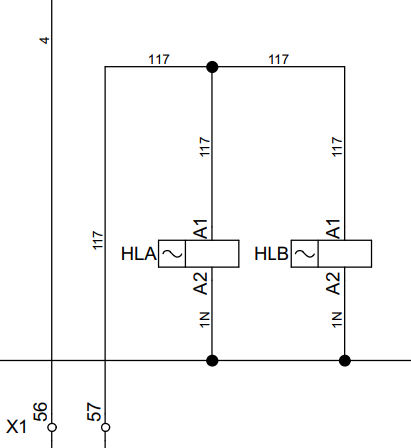The 3 Metre Rule in BS 7671:
- tristannewton
- 4 days ago
- 3 min read
Every electrician knows the golden rule: conductors must be protected against overload at their origin. This is why fuses, MCBs, or similar form of protection are normally installed right at the point where a cable begins its run. However there are sometimes exceptions
Understanding Regulation 433.2.2
The logic is simple enough – if every part of the conductor is protected it nearly elimnates risk of overheating (which then causes fire, etc). Yet the Wiring Regulations acknowledge that real life isn’t always so neat. There are times when fitting a protective device at the very start of a conductor is not practical. For those cases, we can look at Regulation 433.2.2 of BS 7671.

The Core of Regulation 433.2.2
The regulation permits a protective device to be located part-way along a conductor run, so long as the section of cable before the device does not feed any branches or outlets. In other words, that section of cable must act only as a link and not supply equipment directly.
At this point, the regulation gives two possible ways to comply. The first is to ensure that the conductor is still adequately protected against fault current in accordance with Section 434. The second, is the so-called “3 metre rule.”

What the 3 Metre Rule Allows
The rule is simple in wording but significant in effect. If the unprotected length of conductor does not exceed three metres, and if it is installed in such a way that the risk of fault is kept to a minimum, then the protective device may be positioned further along the run.
This makes sense: a conductor that is only a metre or two in length, solidly fixed, and well protected against damage is far less likely to create danger than a long, exposed run. By limiting the unprotected length, the regulations allow a degree of flexibility without sacrificing safety.
How Risk Must Be Minimized
It is important to understand that the regulation does not grant a free pass simply because the cable is short. The installation must still be arranged to reduce danger as far as possible. That means the conductor should be securely contained, routed directly, and positioned so it is unlikely to suffer mechanical damage. In practice, this often means the conductor is inside trunking or an enclosure, kept straight and supported, and placed where accidental contact is impossible.

Where It Matters in Practice
In control panels, the three-metre rule is particularly relevant because protective devices are not always positioned at the exact point where conductors enter or leave an enclosure. A common example is the short link between a panel’s main incoming isolator and the first set of protective devices, such as MCCBs or MCBs on a distribution board. These links are often less than three metres in length, contained within the metalwork of the enclosure, and routed in a way that eliminates the risk of mechanical damage. In such cases, Regulation 433.2.2 allows those conductors to remain unprotected against overload for that short distance, so long as they are installed to minimise the risk of fire or danger to persons.
A Rule Worth Knowing
Regulation 433.2.2 is one of those parts of BS 7671 that can easily be overlooked, yet it proves invaluable in day-to-day installation work. The three metre rule in particular provides a clear and practical solution to what would otherwise be a grey area.
The message is straightforward: a short, carefully installed length of unprotected conductor is acceptable, but only when the installation minimises the chance of fault, fire, or harm. By understanding and applying this detail correctly, electricians can design with flexibility while still staying within the boundaries of the Wiring Regulations.


